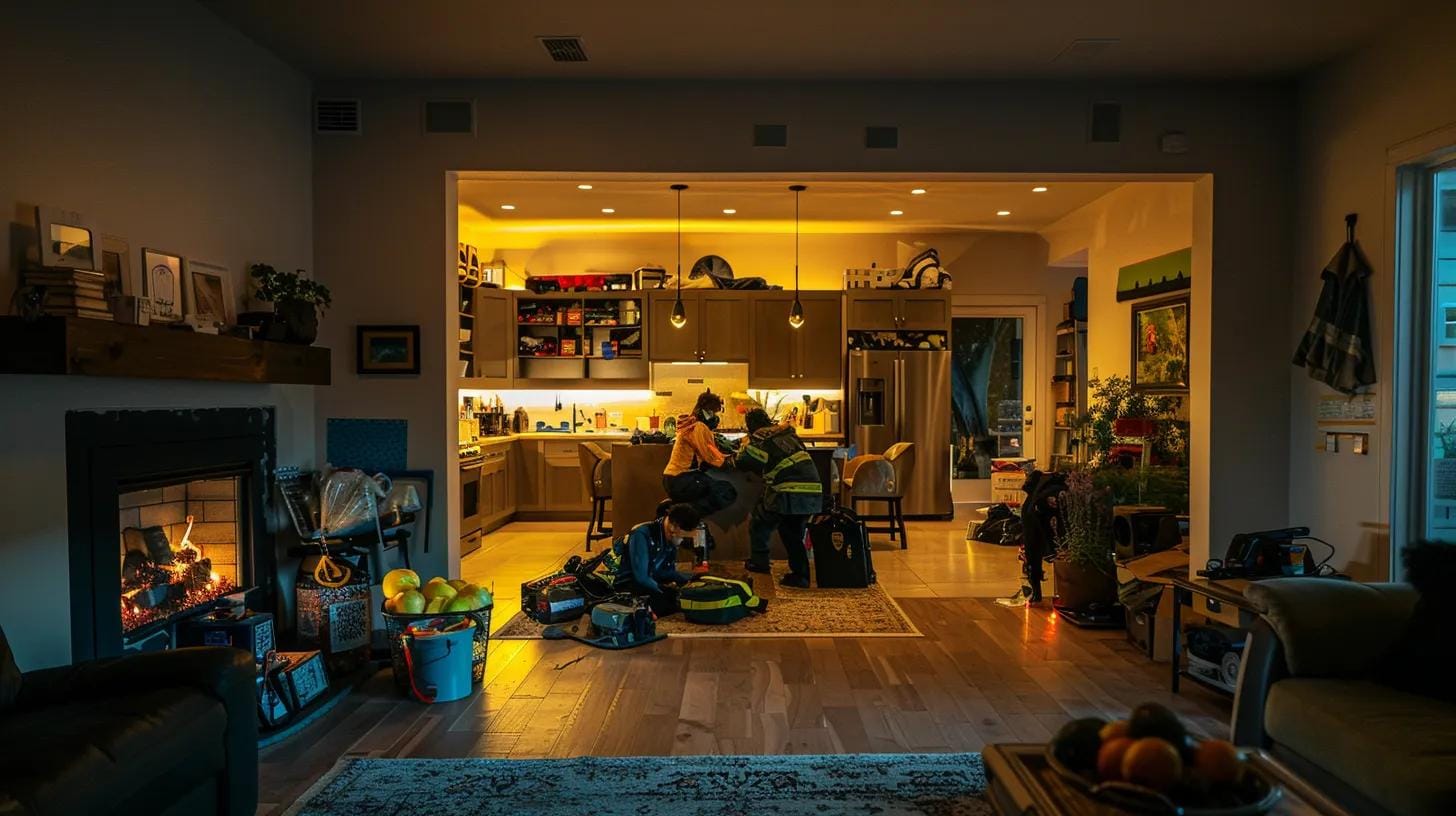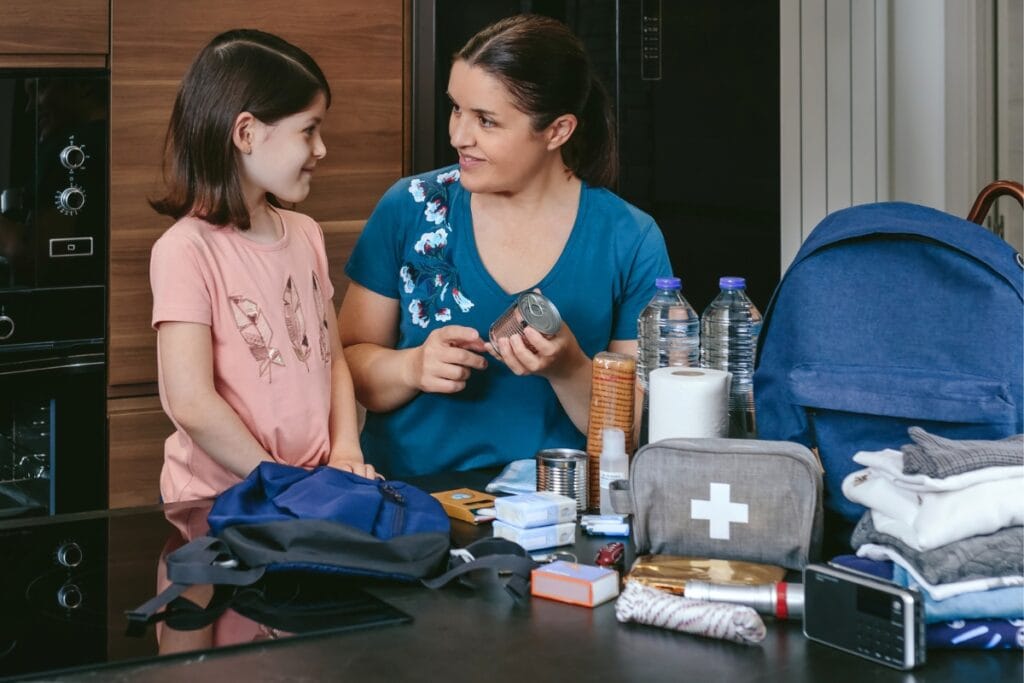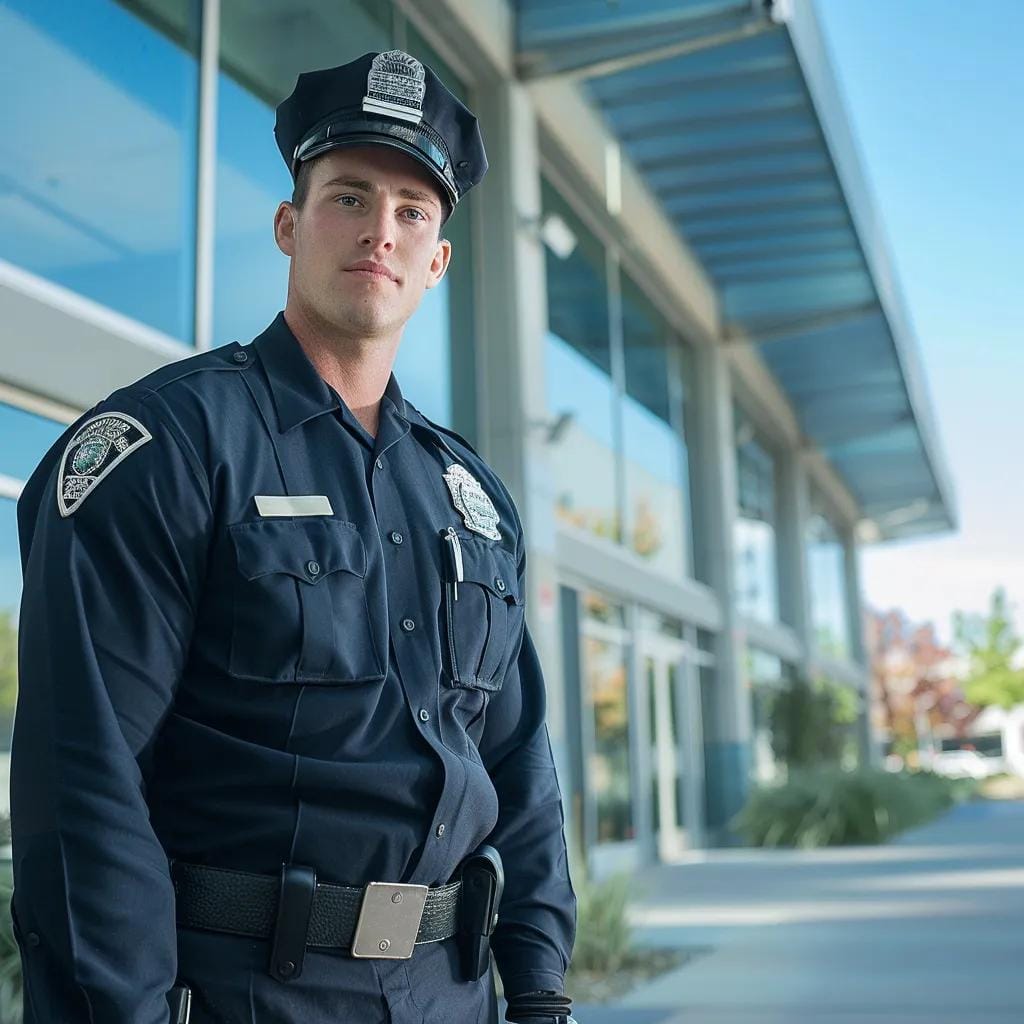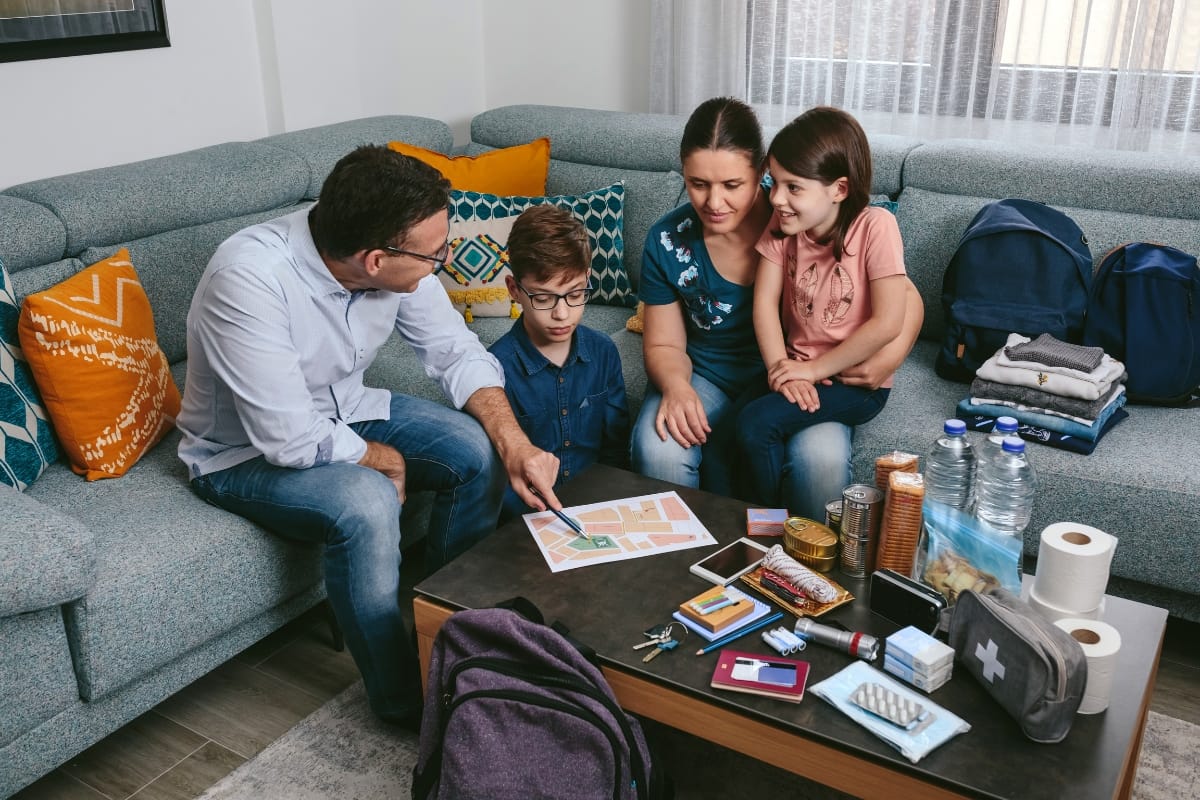In an unpredictable world, being prepared can make all the difference. Active threat training, once reserved for workplaces and schools, is now becoming an essential consideration for homeowners who want to safeguard their families. Whether it’s a home invasion, natural disaster, or other high-stress emergency, knowing how to respond quickly and effectively can save lives. This guide explores how homeowners can implement active threat training to boost awareness, build confidence, and create a safer home environment. It’s not about living in fear—it’s about being ready when it matters most.
Don’t Wait for a Crisis: Active Threat Readiness Starts Now
What Is Active Threat Training and Why Is It Essential for Homeowners?

Active threat training equips homeowners with the knowledge and skills to recognize, respond to, and recover from dangerous situations that fall outside the scope of traditional security measures.
Rather than simply installing alarms or locks, participants learn to cultivate situational awareness and rapid decision-making under pressure. Through a combination of online lessons, hands-on drills, and realistic simulations, homeowners develop a proactive mindset that helps them protect their family and property when seconds count.
How Does Active Threat Training Protect Your Home and Family?
The program begins by teaching how to spot subtle warning signs of trouble—whether it’s a suspicious visitor at the door or indications of escalating tension in the neighborhood. Next, participants practice clear, step-by-step responses: identifying safe escape routes, securing entry points, and communicating effectively with household members.
In scenarios where alarms and cameras may be compromised, trainees learn to make split-second choices about when to evacuate, lock down, or seek shelter in place. Simulated drills reinforce muscle memory, so that under stress, instincts guide people to follow proven safety protocols rather than panic. By mastering these techniques, homeowners build confidence and minimize the risk of injury or property loss during intrusions, active shooter events, or other emergencies.
What Types of Threats Are Covered in Active Threat Training?
Active threat training addresses a broad spectrum of dangers. Home invasions and break-ins are covered first, with lessons on door reinforcement, window barriers, and discreet notification of authorities. For more extreme scenarios—such as an armed intruder—participants learn how to implement lockdown procedures, coordinate with law enforcement, and use improvised tools to create barriers or distractions.
Training also extends beyond deliberate human threats: modules on severe weather and wildfires teach when to shelter and when to evacuate, while cyber-assisted physical threats explore the risks of compromised smart-home devices. Behavioral analysis units help homeowners understand how to de-escalate conflict and recognize signs of mental health crises before they turn violent. By combining expertise from first responders, firearms instructors, and medical professionals, the curriculum delivers a comprehensive, real-world approach to preparedness.
Who Should Participate in Active Threat Training?
Any homeowner who wants more than a passive security system benefits from this training, but it is especially valuable for those living in areas with longer emergency response times or for families with children and elderly relatives. Single occupants and dual-income households alike gain peace of mind by knowing exactly how to act if the worst happens.
Community leaders, neighborhood-watch volunteers, and property managers can use their training to guide neighbors and visitors, fostering a collective culture of vigilance. Even those with little prior tactical experience find that, through repeated practice and clear instruction, they can acquire the mental toughness and practical skills needed to keep themselves and others safe.
Bringing Threat Training Home
Incorporating active threat training into your household routine means regular refreshers on protocols and occasional scenario-based exercises with family members. Homes become safer when everyone understands their role—who grabs the emergency kit, which window to use as the primary escape route, and how to send silent alerts.
By making preparedness an ongoing conversation rather than a one-time event, homeowners create resilient, informed families capable of facing adversity with calm and purpose. Whether confronted by an intruder, a sudden storm, or a cyber-inspired home breach, well-trained residents stand ready to protect what matters most.
How Can Homeowners Develop Practical Skills for Emergency Situations?

Building effective emergency response skills requires both study and practice. Homeowners should begin by familiarizing themselves with core principles—such as threat recognition, situational awareness, and decision protocols—through reliable resources. Beyond reading or watching instructional videos, it’s crucial to rehearse these concepts in controlled environments.
Simulated drills, whether at home or in community workshops, offer the chance to walk through lockdown procedures, practice evacuations, and test communication plans with family members. Regularly scheduled rehearsals reinforce muscle memory so that, when a real emergency occurs, actions become instinctive rather than hesitant.
Key Response Strategies for Active Threat Scenarios
A rapid, structured assessment of any dangerous situation can save precious seconds. Homeowners are taught to scan their surroundings for signs of imminent harm, secure doors and windows, and signal for assistance from authorities or nearby neighbors. Establishing one or more designated safe rooms—rooms with reinforced locks and minimal windows—and mapping clear exit routes helps everyone understand where to go and what to do if fleeing is safer.
Communication protocols, such as a shared code word or group text alert, ensure that family members know when to reunite or shelter separately. By drilling these strategies periodically, households eliminate confusion, reduce delays, and create a coordinated response under stress.
How Online Courses and In-Person Workshops Enhance Preparedness
Online training modules offer flexibility, allowing homeowners to learn foundational concepts at their own pace. Interactive scenarios and video demonstrations present realistic threat situations, prompting learners to choose appropriate responses and receive instant feedback. However, reading about a strategy differs from executing it under pressure.
That’s where in-person workshops come in. Led by experienced instructors, these sessions recreate emergency environments—complete with simulated intruders, timed evacuations, and communication challenges—so participants can practice under supervision. Combining the convenience of online learning with the realism of live drills ensures both intellectual understanding and physical readiness.
The Role of Expert Instructors in Effective Training
Seasoned professionals from law enforcement, military, and emergency medical backgrounds bring invaluable insights into active threat training. They recognize common mistakes—such as improper lock handling or tunnel vision during evacuation—and offer hands-on corrections. Instructors tailor drills to reflect the unique layout and vulnerabilities of each home, advising on everything from furniture placement to escape ladder options.
Their real-world stories emphasize why strict adherence to protocols matters, while their supportive coaching builds confidence. At the end of a training session, homeowners leave not only with checklists and diagrams but with a clear, practiced action plan that aligns with their household’s needs and the local environment.
Integrating Emergency Skills into Everyday Life
True preparedness goes beyond one-off drills. Families should schedule quarterly practice sessions—testing alarms, reviewing escape routes, and updating emergency contacts. Adding emergency kits in designated locations and ensuring everyone knows how to operate them reinforces readiness.
Schools, neighborhood watch groups, and local community centers often host refresher courses that keep everyone’s skills sharp. By weaving emergency training into the fabric of daily life, homeowners transform theoretical knowledge into reliable instincts, ensuring that they and their loved ones can act swiftly and confidently if a crisis arises.
What Tools and Resources Support Homeowner Emergency Preparedness?

Having the right tools and resources in place transforms anxiety into action when emergencies strike. Physical items—such as well-stocked emergency kits, sturdy flashlights, battery-powered radios, and backup power sources—provide immediate support. Digital resources, including downloadable checklists, mobile alert apps, and step-by-step guides from reputable agencies, keep plans organized and current. Professional home security assessments and coordinated training programs round out a comprehensive approach, ensuring that both the equipment and the knowledge needed to respond effectively are readily available.
How to Use Emergency Preparedness Kits Effectively
An emergency kit should contain at least three days’ worth of water and non-perishable food for every household member, along with a first-aid kit, essential medications, and spare prescription glasses if needed. Include tools such as a multi-tool knife, fire extinguisher, whistle, and sturdy gloves. Flashlights and extra batteries are crucial, as is a battery-powered or hand-crank radio for weather and safety updates.
Store copies of important documents—identification, insurance policies, and medical records—in a waterproof pouch. Keep the kit in an easy-to-reach location, and review its contents every six months: rotate food and batteries, update medications, and adjust supplies for age-specific needs like infant formula or senior supplements. Running through a quick drill—retrieving the kit, setting up a temporary shelter area, or administering first aid—familiarizes everyone with the equipment and uncovers any missing items before they become critical.
What Checklists and Guides Help Maintain Readiness
Detailed checklists turn broad plans into executable steps. A living document should cover basic supplies—water, food, light, and communication—as well as household-specific items like pet supplies, backup power cords for medical devices, and tools for home repairs. Checklists from organizations such as FEMA or the Red Cross offer threat-specific guidance, from flood evacuation to fire escape routes.
Keep both printed and digital versions handy—printing laminated copies for near emergency exits and storing editable files on a smartphone or in cloud storage. Set calendar reminders to review plans seasonally, ensuring that weather-related adjustments are made: for example, adding snow shovels and rock salt in winter or extra water and cooling devices in summer. Digital checklists with notification features help track progress and remind household members of pending tasks or expiring supplies.
How Can Home Security Assessments Improve Safety?
A professional security assessment takes a detailed look at a home’s vulnerabilities. Experts examine entry points—doors, windows, and garage access—for weak locks or gaps, and recommend reinforcement options such as deadbolts, security bars, or smart lock upgrades.
They assess exterior lighting, suggesting motion-activated fixtures or timed illuminations to deter unwanted visitors and improve visibility during nighttime evacuations. Evaluations also cover interior layouts, identifying clear escape routes and advising on the placement of safety equipment like fire extinguishers, smoke detectors, and carbon monoxide alarms.
By comparing a property’s layout against neighborhood risk factors—proximity to flood zones, local crime data, or wildfire history—assessors tailor recommendations to the specific environment. Regular follow-up assessments track improvements, adapt to changing threat levels, and integrate new technologies, such as security cameras or emergency notification systems. Over time, this targeted approach not only enhances physical safety but also boosts confidence, ensuring that when an emergency arises, the home and its occupants are ready to respond effectively.
How Do Homeowners Create a Comprehensive Emergency Plan?

A comprehensive emergency plan begins by identifying the specific risks a household may face—whether it’s severe weather, power outages, home intrusions, or other unexpected crises. Once potential threats are mapped out, homeowners can develop detailed response strategies that address each scenario. This starts with a walkthrough of the property to spot exits, safe rooms, and areas where emergency supplies will be stored. From there, roles are assigned: who gathers children, who secures pets, who retrieves the emergency kit, and who remains focused on shutting off utilities if necessary. Establishing these responsibilities in advance prevents paralysis under stress and keeps everyone moving in a coordinated fashion.
Essential Elements of a Home Emergency Plan
At the core of every plan are clear, scenario-specific actions. For a lockdown, doors and windows should be locked immediately and lights turned off, while for an evacuation, residents need to know which exit routes to use and how to reach the designated meeting point outside. Households with young children, elderly adults, or individuals with mobility challenges require tailored instructions: where wheelchairs or walkers will be stored, how medication or specialized equipment will be carried, and who will assist each vulnerable family member.
Communicating effectively is just as important as having a plan. Families should agree on primary and secondary methods—cellphone calls, text messages, or, if communications fail, predetermined signals such as specific lights blinking or emergency whistles. Finally, deciding on a safe, easily accessible reunion spot—whether it’s a neighbor’s front porch or a nearby park—ensures that everyone can be accounted for once evacuation is complete.
Involving All Household Members in Preparedness
Creating a plan is only half the work; making sure every person understands it is equally critical. Regular family meetings to review procedures reinforce the importance of each role. Role-playing drills help children remember where to go and what to do without feeling overwhelmed. Visual aids, such as floor-plan diagrams posted in common areas, provide quick reminders of exit paths and meeting points.
Locating emergency kits in multiple, clearly marked spots—garage, kitchen, master bedroom—ensures that no matter where a person is when a crisis hits, supplies are within reach. Practicing safe-room protocols, such as blocking a door with heavy furniture, helps everyone build confidence that they know how to protect themselves if they cannot safely escape.
Updating Emergency Plans Over Time
An emergency plan must evolve alongside changes in the household and the surrounding environment. Plans should be reviewed at least once a year—or more often if a family moves to a new home, adds a member, or undertakes significant renovations that alter exit pathways. After each drill, take a few minutes to discuss what went smoothly and what caused hesitation. Adjust the plan accordingly, perhaps moving a kit to a more convenient location or clarifying who is responsible for pet care.
It’s also important to stay informed about new safety technologies—such as updated smoke detectors, smart-home alerts, or improved first-aid gear—and incorporate them into the plan. Finally, confirming current contact information for all family members, neighbors, and emergency services guarantees that communication protocols remain reliable when they matter most.
What Are Common Challenges Homeowners Face in Active Threat Preparedness?

Implementing a thorough emergency plan can be demanding. Homeowners often struggle with mental barriers—worrying that planning for worst-case scenarios is pessimistic or fear-inducing. Practical hurdles also arise, such as out-of-date or malfunctioning equipment, forgotten escape routes, and partial plans that overlook critical details. Acknowledging these gaps is vital to closing them and ensuring that readiness efforts translate into effective action when it counts.
Overcoming Fear and Anxiety About Emergencies
Fear of emergencies is natural, but it need not paralyze. Regular, low-stakes practice helps shift the mindset from “What if?” to “Here’s how.” Short drills simulate simple scenarios—locking down the front door, gathering at a designated safe room, or retrieving the emergency kit—to build muscle memory.
Pairing these exercises with stress-management techniques, such as controlled breathing or quick mindfulness breaks, reduces the body’s fight-or-flight response. Group discussions reinforce the notion that preparation is a proactive measure, not an admission that something terrible will happen. As homeowners see how smoothly small drills unfold, confidence replaces dread, and a calm, decisive approach becomes second nature.
Identifying and Addressing Overlooked Vulnerabilities
Home security often fails at the simplest points. People assume that an alarm will alert the authorities, yet neglect to test sensors or replace dead batteries. Escape routes become useless when furniture drifts into the hallway or doors stick after seasonal humidity. Communication plans break down if contact lists aren’t updated or if cell service is unreliable.
Even emergency kits sit untouched in closets, buried under storage when they should be clearly labeled and easily accessible. Conducting periodic home security assessments—walking each escape path, testing locks and sensors, and inventorying kit contents—reveals these blind spots. Once vulnerabilities are laid bare, addressing them usually involves straightforward fixes: rearranging furniture, installing touch-button locks, updating family phone lists, and restocking supplies.
Balancing Preparedness With Everyday Life
It’s easy to let emergency planning drop when daily responsibilities crowd the calendar. The key is to weave readiness into routine tasks. Add a quarterly reminder to the family calendar for a fifteen-minute review of plans and a quick check of emergency kit items. Pair drills with other seasonal home maintenance—test smoke and carbon monoxide detectors when changing batteries for flashlights. Use smartphone apps or shared family notes to track expiration dates on food, water, and medications, and to send alerts when it’s time to rotate supplies. Involve every household member, so that review meetings double as family discussions and strengthen everyone’s familiarity with roles. This incremental approach keeps readiness fresh without demanding large blocks of time.
How Can Homeowners Stay Informed About Emerging Threats and Training Updates?

Keeping pace with evolving risks and response techniques is essential for maintaining household safety. In a world where both natural and human-made emergencies can shift rapidly, homeowners need reliable methods to track new developments and refresh their skills. By combining regular monitoring of authoritative channels with ongoing participation in training programs, families can ensure their emergency plans and reactions remain up to date.
Reliable Sources for Active Threat Information
Official government websites—such as those run by the Department of Homeland Security, state emergency management agencies, and local public safety departments—provide the most accurate and timely alerts. Many of these sites offer RSS feeds or subscription options for email notifications when new advisories are issued.
Regional law enforcement agencies often publish community bulletins detailing recent crime trends, suspicious activity reports, and suggested safety measures. Professional training organizations also share newsletters highlighting best practices and recent case studies, helping homeowners understand how incidents unfold and what adjustments to adopt in their own plans.
Accessing Updated Training Modules and Workshops
Technology makes it easier than ever to stay current. Online learning platforms host interactive courses that cover the latest protocols—everything from active shooter response to severe weather survival. These modules are frequently revised to reflect new research, changes in building codes, or advances in emergency communication tools.
Webinars allow homeowners to ask questions of experts in real time, while virtual reality simulations let participants practice responses in lifelike scenarios without leaving home. For those who prefer hands-on instruction, local fire departments, community colleges, and nonprofit safety centers regularly schedule in-person workshops. Weekend drills and neighborhood training sessions not only teach valuable skills but also strengthen community ties, so neighbors can rely on one another when emergencies strike.
Integrating Alerts Into Everyday Routines
To make information gathering a natural part of daily life, homeowners can set up mobile alerts for weather watches, public safety messages, and traffic advisories. Smartphone apps—offered by many emergency management agencies and third-party developers—combine multiple alert sources into a single feed, reducing the need to hop between websites. Calendar reminders can prompt quarterly reviews of plan components or alert families when training certifications are due to expire. By weaving these digital tools into existing routines—checking the weather app each morning or reviewing alerts during a weekly family meeting—staying informed becomes effortless rather than burdensome.
The Importance of Continuous Practice
Knowledge alone is not enough. Turning information into action requires practice. Scheduling regular drills—whether quarterly walk-throughs of escape routes or monthly tabletop exercises—gives each household member the chance to rehearse their role and identify any gaps.
As new threats emerge or household circumstances change, these drills confirm that everyone knows how to act, where to meet, and how to communicate if conventional systems fail. Frequent practice sessions also build confidence and reduce stress during an actual emergency, ensuring that responses are swift, coordinated, and effective.
Frequently Asked Questions
Q: What is active threat training? A: Active threat training is a comprehensive program that equips homeowners with practical strategies to respond effectively to emergencies, including home invasions, active shooter scenarios, and natural disasters. It enhances situational awareness and promotes decisive action during crises.
Q: How often should homeowners update their emergency plans? A: Homeowners should review and update their plans at least annually or immediately after any significant change in household composition or local threat levels to ensure all procedures remain effective.
Q: Can active threat training help reduce fear during emergencies? A: Yes, repeated drills and scenario-based exercises help build confidence and reduce fear, enabling homeowners to respond calmly during real emergencies.
Q: What types of resources are needed for effective preparedness? A: Effective preparedness requires a combination of emergency kits, digital checklists, up-to-date training modules, and professional home security assessments to ensure a coordinated response during emergencies.
Q: How do expert instructors enhance the quality of active threat training? A: Expert instructors bring real-world experience from law enforcement, military, and emergency medical services. Their guidance helps correct techniques, tailor training to individual home environments, and build overall readiness.
Final Thoughts
By taking proactive steps to understand and respond to active threats, you empower yourself and your loved ones with the confidence and skills needed to face emergencies head-on. 4Horsemen Investigation & Security specializes in comprehensive home active threat training. Don’t wait until it’s too late—reach out today at 404-680-0860 or visit our website to send us a message and start building a safer, more prepared home.





